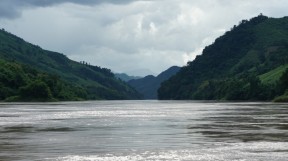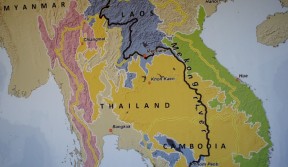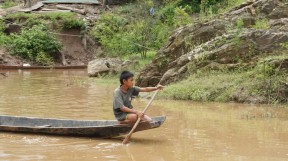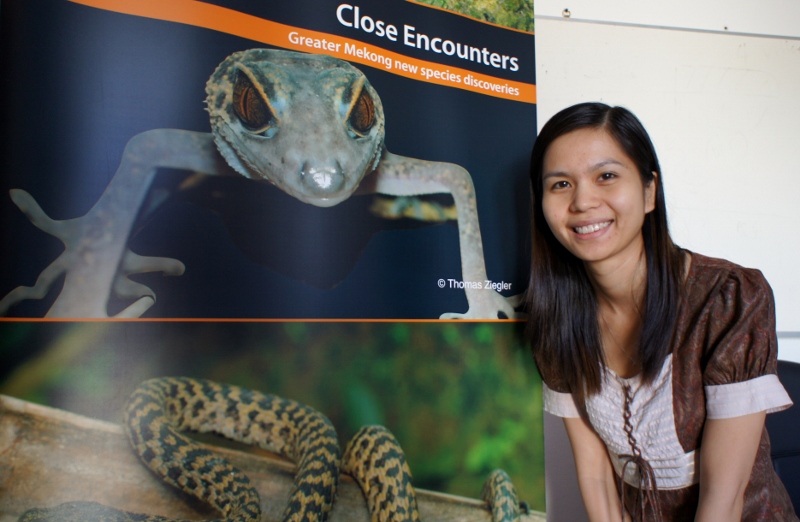Yesterday, we visited WWF Laos office in Vientiane. In a nice 2-storey house surrounded by gardens, we met with an energetic young woman, Ms. Trang Dang Thuy, Manager for sustainable hydropower and river basin management.
Trang, what does your title mean exactly ?

I’m working on freshwater issues in the Greater Mekong region. In short, my job is about how to maintain the ecological integrity of the Mekong and other rivers by supporting hydropower projects that are compatible with river ecosystems ecology and by ensuring key habitats and species are conserved.
Which are the species needing your help ?
One of our flagship species is the endemic giant catfish. It’s the 3rd largest fish in the world (weighting up to 300 kg) and there is a small population living in the Mekong river. This fish is very important in the culture and traditions of Laos and there are many legends behind it. Nowadays, there is still a great mystery surrounding that elusive creature that lives at the bottom of the river, eating seaweeds and vegetation, as it is difficult to observe it in the wild. Unfortunately it gets caught by accident in fishing nets (bycatch) and the population seems to be decreasing at an alarming pace. Even if fishermen try to release the fish when it gets caught, the survival rate after a capture is very low. We are working with the governments of Thailand, Laos and Cambodia as well as at the local level, with fishermen communities, to protect this charismatic creature.
Another species we are trying to protect is the critically endangered Irrawaddy dolphin that lives in Laos and Cambodia.
What about dams, are there really « good » dams out there ?

Yes, there are some hydropower projects that are sustainable. For example, some do produce electricity using no dams at all (i.e. water is diverted for a few hundred meters, flowing through a turbine, and then goes back to the mainstream so the flow is intact). The important thing is to make all the necessary risk assessments before building a new project : I am talking about the risks for nature but also for people, as fish is their main source of food. Therefore WWF supports a 10-year delay on new hydropower developments in the region to ensure best practices are applied on a case-by-case basis. And it is important to work at the landscape level, beyond the only river we are looking at, using a regional and integrated approach.
You are fighting giants (i.e. hydropower development), how do you keep your motivation intact ?
I think we are at a turning point in history. All around the world, many river basins have been destroyed while the Mekong is still quite intact. It is the river that produces the most fish in the world, it is in 2nd position after the Amazon in terms of fish species diversity (although only 1/7 the size of the Amazon) and it has almost intact flood pulse and flood plains. Can the governments in this region learn from others’ mistakes and find their own sustainable way ?
What is your vision of conservation ?

For me it is essential to link conservation with people livelihood. I don’t have a « romantic » view of nature conservation, rather I think that conservation makes more sense if it can help people and ensure nature can still provide them with food, medicine, etc.
You told me you studied in Milano… I’m intrigued ?!
Yes, I studied urban design and policies for 2 years. But to be honest wines and boys got me there in the first place… And wine comes first !;-)
Last one, what are you going to do today to save the planet ?
Well, as a start I haven’t printed anything today !
VB

salut les amis
toujours un grand plaisir a vous suivre par ces récits ,nous pensons bien a vous .
Et au faites G ,un très bon anniversaire avec quelques jours de retards
Les Z’hallouët’s